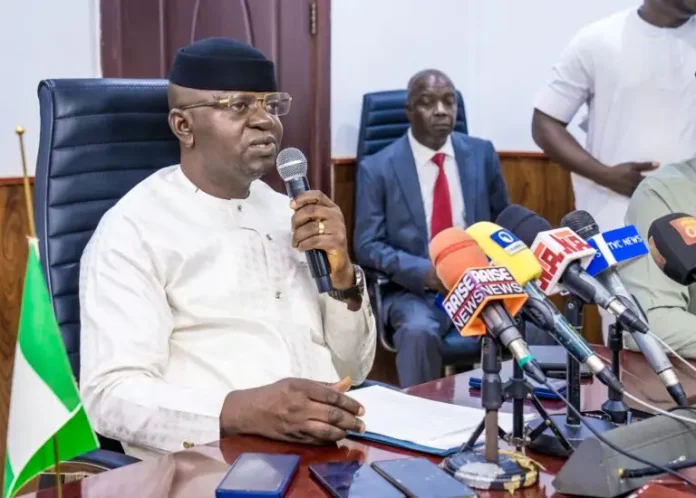News Investigators/ The Federal Government has refuted claims that the recent devastating flood in Mokwa, Niger, was caused by the release or failure of water from nearby dams.
Addressing journalists at a press briefing in Abuja on Tuesday, the Minister of Water Resources and Sanitation, Joseph Utsev, said both the Kainji and Jebba dams remain structurally sound and fully operational.
”It is important to clarify that the flooding in Mokwa was not the result of any water release from the Kainji or Jebba dams.
”Both facilities are intact and pose no risk to surrounding communities,” the minister stated.
Prof. Utsev expressed the federal government’s sympathy to the Government and people of Niger, especially the communities affected by the disaster, which occurred in the early hours of Thursday, May 29.
He commended the swift response of the state government, local authorities, and first responders for providing relief to victims.
According to the minister, the flooding was largely due to heavy rainfall associated with extreme weather conditions driven by climate change, which overwhelmed the town’s drainage infrastructure.
He explained that unregulated building activities and encroachments blocked a seasonal tributary of River Dingi, which normally remained dry except during periods of heavy rainfall.
According to him, the absence of efficient alternative drainage channels worsened the situation.
The minister also recalled that the Nigeria Hydrological Services Agency (NIHSA), under the ministry, had warned of potential flooding in Mokwa Local Government Area as part of the 2025 Annual Flood Outlook (AFO) released on April 10.
”The AFO identified 1,249 communities across 176 local government areas in 33 states and the Federal Capital Territory (FCT) as high flood-risk zones. An additional 2,187 communities in 293 LGAs were listed as moderate risk.
”The high-risk states include Abia, Adamawa, Akwa Ibom, Anambra, Bauchi, Bayelsa, Benue, Borno, Cross River, Delta, Ebonyi, Edo, FCT, Gombe, Imo, Jigawa, Kebbi, Kogi, Kwara, Lagos, Nasarawa, Niger, Ogun, Ondo, Osun, Oyo, Rivers, Sokoto, Taraba, Yobe, and Zamfara,” he said.
He reiterated earlier warnings, urging state and local governments to improve drainage, relocate at-risk communities, raise public awareness, and enforce land-use laws.
He also encouraged stakeholders to consult NIHSA’s online flood forecast dashboard for detailed, location-specific risk information to aid proactive planning and disaster mitigation.
Utsev described the Mokwa flood as a stark reminder of the increasing impact of climate change, which continues to manifest in more frequent and intense weather events nationwide.
”As a Ministry, we remain fully committed to managing Nigeria’s water resources sustainably and building climate-resilient systems.
”We call on all sectors, government, private, civil society, and communities to work together in building safer and more resilient environments,” he said.
He added that technical personnel from the ministry, NIHSA, the Upper Niger River Basin Development Authority (UNRBDA), and the National Water Resources Institute (NWRI) were already on site in Mokwa conducting a thorough assessment to guide future interventions.
While expressing the government’s condolences, the minister noted that flooding is not just a natural event but a developmental issue requiring coordinated and sustained response.
According to data from the National Emergency Management Agency (NEMA), more than 200 people lost their lives and around 500 remain missing following the floods in Mokwa on May 29.
NEMA also reported that at least 121 individuals sustained injuries, while more than 3,000 residents were displaced.
The flood, triggered by heavy rainfall destroyed over 265 homes, as well as key roads and bridges.
President Bola Tinubu has pledged federal assistance and activated the National Emergency Response Centre to coordinate ongoing recovery efforts.
NAN

